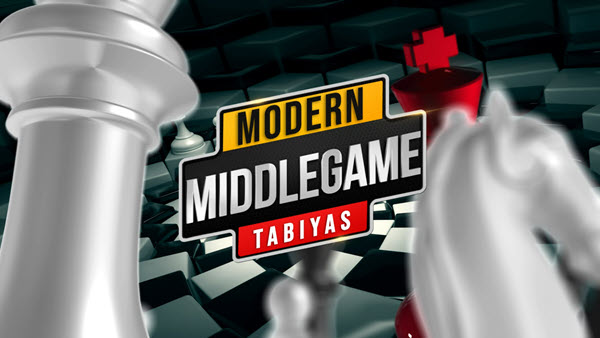Added on 1/25/2022

GM Davorin Kuljasevic is back! One of our most loved contributors presents ICC members with a fantastic video course: The Importance of Modern Middelgame Tabiyas. What does that mean, you'll ask. Here is what this new course is about, in the words of Davorin himself.
Tabiya is a position in the opening of a game that occurs after a sequence of moves that are heavily standardized and from which the players have many possible moves again.
In this course, though, we will not examine typical opening tabiyas that arise after the first 5-8 moves. These are characterized by a relative lack of development and, consequently, a large number of possibilities for both sides. Instead, we will focus on standardized positions that arise in the transitional phase from opening to the middlegame, typically around moves 10-12. By that point, both White and Black have usually castled and developed most if not all of their minor pieces and determined the basic pawn structure in the center. What we do in this transitional phase of the game has a significant impact on how the arising middlegame is going to unfold. This is why I took the liberty to call such positions ‘middlegame tabiyas’, even though the term ‘tabiya’ is usually associated with the opening. The term ‘modern’ in the title refers to middlegame tabiyas that are popular today. Therefore, a Scheveningen Sicilian tabiya that was heavily debated in the 1980-ies, for example, will not be of our interest. In addition, it is also important that a modern middlegame tabiya in question is popular on a club-level and professional level alike. For example, the ‘Berlin endgame’ (yes, endgame tabiyas also exist!) is popular mostly at the super-GM level, so we will not cover this tabiya. In this course, you will have an opportunity to explore popular positions in the Italian Game, Ruy Lopez, Alekhine Defense, Queen’s Indian Defense, King’s Indian Defense, and others. You likely have one or more of these tabiyas in your repertoire with either color. I believe that it is important to learn about middlegame tabiyas because once your knowledge of concrete opening variations ends, you need to rely on your general understanding of the ensuing typical middlegames. I have observed that many players mostly focus on learning or cramming opening theory, but they do not invest nearly as much time into analyzing typical middlegame positions that arise after that. A big goal of this course is to help you appreciate the importance of this kind of chess study. Studying middlegame tabiyas helps you enormously with your middlegame understanding and play because you become better equipped to figure out the strategic nuances, such as: which structure is favorable and which is not, what is the best plan for me and for my opponent, which piece trades will improve my position and which should be avoided, etc. In this course, we will typically focus on two main aspects of middlegame tabiyas: 1. Pawn structure, which we can further classify as: a) static, and b) flexible (more on them later in the course) 2. Typical plans, maneuvers, and ideas – for you and your opponent One of the best ways to learn and memorize important strategic ideas mentioned above is to study model games in a certain middlegame tabiya. My approach in this course will be exactly to present the material through model games because they capture the essence of a typical plan or a pawn structure the best. You don’t need to remember every detail about a certain middlegame tabiya, but knowing several key model games will surely make you more competent and aid your over-the-board decisions. Ultimately, this course should teach you concrete ideas in middlegame tabiyas that we will cover and help you acquire the analytical tools to study other important middlegame tabiyas on your own in the future.
Let us now look at the overview of the course by chapters (numbers indicate the order of weekly videos): 1. Introduction 2. Italian Game: Modern Giucco Piano – part 1 3. Italian Game: Modern Giucco Piano – part 2 4. Ruy Lopez: Chigorin variation 5. Caro-Kann Defense: Modern 4…Nf6 6. French Defense: Steinitz variation 7. Alekhine defense: Four pawns attack 8. Semi-Slav Defense: Anti-Meran variation 9. Queen’s Indian Defense: Fianchetto variation 10. Nimzo-Indian Defense: Rubinstein variation 11. King’s Indian Defense: Fianchetto variation 12. English Opening: Reversed Dragon Sing up NOW for a free trial, without obligations, and check the video!
